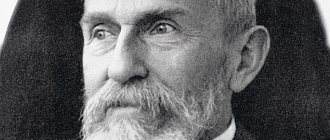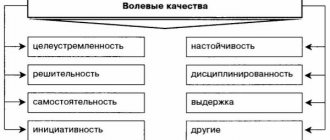Behaviorism is a psychological doctrine, precisely translated, meaning the study of the behavioral responses of individuals. Proponents of this doctrine argued that consciousness is accessible to scientific study only through objectively observed behavioral acts. The formation of behaviorism was accomplished under the auspices of the postulates of I. Pavlov and his experimental methods of studying the behavioral reactions of animals.
The concept of behaviorism was first put forward in 1913 by a psychologist originally from the USA, J. Watson. He set himself the goal of transforming psychology into a fairly accurate science, based on properties observed exclusively objectively and noted in the characteristics of human activity.
The leading proponent of behavioristic theory was B. Skinner, who developed a set of experimental methods that made it possible to compare behavioral acts with concepts usually used to describe mental states. Skinner classified scientific terms exclusively as those that delineate only physical phenomena and objects. And he interpreted concepts of a mental nature as “explanatory fictions” from which it is necessary to free psychology as a science. Along with his own psychological teaching about behaviorism, Skinner actively promoted its social aspects, cultural aspects and results. He rejected moral responsibility, free will, personal independence and contrasted all such mentalistic “fables” with structures for transforming society on the basis of developing various techniques for manipulating and controlling human behavior.
Founder of the behavioral approach
J. Watson is considered the founder of behaviorism. He called his goal the reconstruction of psychology as a science into a more accurate and objective one, which provides a qualitative and quantitative assessment of the properties of the psyche. He also created the fundamental scheme for learning behavior, which is the subject of study in behaviorism: a stimulus causes a response. That is, he said that the behavior of any person depends only on what stimuli he encounters and how he reacts to them. In addition, he was confident that using this scheme, any baby could be raised into the kind of person who would be most in demand in society.
Research by Pavlov and Thorndike
I.P. Pavlova, one might say, was the predecessor of the theory of behaviorism, since on the basis of his theory of reflexes the concept of behavior was created. He worked with animals and found out that they have certain unconditioned reflexes, embedded in the form of instincts and determining the behavior of the creature. He also revealed the possibility of artificially developing conditioned reflexes, on the basis of which the behavior of the animal as a whole is built.
B. Skinner's research within the framework of behaviorism
Burress Skinner is an American psychologist, writer, successor of the ideas of J. Watson, who developed the theory of operant conditioning .
He believed that the human body is a “black box.” Everything that fills this box (emotions, motives, drives) cannot be objectively measured, so they should be excluded from the sphere of empirical observation. But behavior can be objectively measured, in fact, this is what Skinner did.
He did not accept the idea of a personality that directs or stimulates behavior. Skinner believed that behavior is generated not by forces that are inside a person (for example, traits, needs, thoughts, feelings), but by forces that lie outside a person. This means that human behavior is regulated not from the inside, but from the outside (by the environment). The study of personality according to Skinner is the discovery of the peculiar nature of the relationship between the behavior of an organism and the results of this behavior, which subsequently reinforce it. This approach focuses on predicting and controlling observed behavior.
B. Skinner, like J. Watson, was interested in such a phenomenon as learning. He even developed the concept of operant conditioning, which was based on the law of effect, which was discovered by E. Thorndike.
Operant conditioning is a learning method that involves a system of rewards and punishments to increase or stop a particular type of behavior. In this case, the body associates its behavior with the subsequent result. Such learning is aimed at reinforcing behavior controlled by the individual.
For example, a person is trying to teach a dog to follow a command. When the dog successfully copes (i.e. follows the command), it receives encouragement (praise, treat). When a dog fails to complete a task, it does not receive reinforcement. As a result, the dog establishes a connection between a certain behavior and the opportunity to receive a reward. In a similar way, you can wean your dog, for example, from doing “its business” on the carpet. You just have to use a punishment system (for example, scold the dog). It turns out to be a kind of “carrot and stick” method. On this occasion, I advise you to read the most interesting book by Karen Pryor , which is called “Don’t growl at the dog! A book about training people, animals and yourself."
Skinner conducted experiments on hungry animals (rats, pigeons), which he placed in a box, which was called the “Skinner box”. The box was empty, there was only a protruding lever inside, under which stood a plate for food. Left alone in the box, the rat moves around and explores it. At some point, the rat discovers a lever and presses it. After establishing the background level (the frequency with which the rat initially presses the lever), the experimenter triggers a food cassette located outside the box. When the rat presses the lever, a small ball of food falls into the plate. The rat eats it and soon presses the lever again. Food reinforces pressing the lever, and the frequency of pressing increases. If the food cassette is disconnected so that pressing the lever no longer delivers food, the frequency of pressing will decrease.
Thus, Skinner noticed that an operantly conditioned response, when not reinforced, fades in exactly the same way as a classically conditioned response. The researcher can establish a differentiation criterion by presenting food only when the rat presses a lever while the light is on, thereby conditioning the rat through selective reinforcement. Light here serves as a stimulus that controls the reaction.
Skinner also adds provisions for two types of behavior: respondent and operant behavior. Response behavior is a characteristic response evoked by a known stimulus; the stimulus, in this case, always precedes the reaction. Examples include constriction or dilation of the pupil in response to light stimulation, jerking of the knee when hitting the patellar tendon with a hammer, and shivering when cold. Operant behavior is a voluntary learned response for which there is no recognizable stimulus. Evoked by operant conditioning, this behavior is determined by the events that follow the response. Those. behavior is followed by a consequence, and the nature of that consequence changes the organism's tendency to repeat that behavior in the future. For example, roller skating, playing the guitar, and writing one's name are operant response patterns (or operants) controlled by the outcomes that follow the corresponding behavior.
The essence of the approach
The essence of the behavioral approach is to study and shape human behavior through various stimuli. They can be determined by the environment - an example from life - the experience of a “hungry” time makes a person overly thrifty; or be artificial - for example, an experiment with little Albert, who was artificially made to be afraid of everything white and fluffy. In addition, stimuli can be both physically tangible - extreme heat or cold, physical punishment, frequent hugs; and verbal, coming from the environment - censure or praise. Subjective experiences - emotions, feelings, states - are not denied in behaviorism, but it is believed that they only depend on external influences, and are not determined by them.
Basic provisions of the behavioristic approach
The main provisions of the theory include the following theses:
- The subject of the theory of behaviorism is the study of the behavioral reactions of animals and people to various stimuli and behavior in general.
- The study of behavior and behavioral reactions is carried out through observation.
- All subjective aspects of a person from the physiology and psyche are determined only by his behavior.
- The behavior of a person or animal is a set of reactions to external stimuli.
- If the nature of the presented stimulus is known, then it is possible to almost accurately predict the reaction that will follow. This is the main goal of behaviorism.
- The behavior of living beings is successfully amenable to external regulation and control.
- Behavior is either inherited in the form of unconditioned reflexes, or acquired in the form of conditioned ones.
- Behavior is the result of learning through repeated repetition of stimuli and reinforcement of the response.
- A skill is the result of the formation of conditioned reflexes. Thinking and speech in behaviorism are also considered a skill, and memory is a mechanism that allows you to retain already acquired skills.
- Mental reactions are formed throughout life, that is, learning can begin at any age and continue for an unlimited amount of time.
- Emotions are also reactions to external stimuli.
Classical behaviorism by J. Watson
John Watson - American psychologist, founder of behaviorism. He tried to make psychology a natural science that would use objective methods.
Watson paid great attention to classical learning , in which the body associates different stimuli (the sound of a bell is a conditioned stimulus, and salivation in a dog in response to the sound of this bell is a conditioned reflex). This type of learning is focused on involuntary, automatic actions.
The body of both humans and animals adapts to its environment through an innate and acquired set of acts, i.e. behavior. Watson interpreted all mental activity as behavior. He considered it as a set of reactions of the body to stimuli, i.e. behavior according to the “stimulus-response” principle (S → R). J. Watson believed that by choosing the right stimulus, it is possible to form the necessary skills and qualities in a person or animal.
Watson's work and the basic ideas of behaviorism were greatly influenced by the discovery by Russian physiologist I.P. Pavlov of classical conditioned reflexes. Largely influenced by Pavlov's work, although Pavlov himself believed that they had misunderstood him, Watson stated that observations of behavior could be described in the form of stimuli (S) and responses (R).
To prove the correctness of the behavioral theory, John Watson and Rosalie Rayner conducted an experiment that became known as “little Albert” .
Watson and Rayner chose for their experiments an 11-month-old infant, “Albert B.”, who was a completely normally developed child. First, the experimenters tested little Albert's reactions by showing him a white rat, masks, burning newspaper, and cotton yarn. None of this revealed any fear in the boy.
They then proceeded to create a fear response. At the same time that Albert was given a white rat to play with, the experimenter hit a steel strip with a hammer so that the baby could not see the hammer and the strip. The loud sound scared Albert. Thus, the child began to become afraid of the rat itself (without being hit). At this stage, the conditioned fear reflex towards the rat was established in little Albert.
Five days later, Albert was back with the experimenters. They checked his reaction: ordinary toys did not cause a negative reaction. The rat still scared the baby. The experimenters checked whether there was a transfer of the fear reaction to other animals and similar objects. It turned out that the child is really afraid of some animals and objects that are not related to the rat (for example, a rabbit (strongly), a dog (weakly), a fur coat, etc.).
Motives for occurrence
The theory of behaviorism as a science of behavior was formed against the background of criticism of the most common method of introspection that preceded it in the 19th century, based on self-diagnosis and introspection. Doubts about the accuracy of such science were raised by the low level of objectivity of measurements and the strong disparity in the information received. J. Watson wanted to create a branch of psychology in which data could be accurately measured and objectively studied. The philosophical basis of behaviorism was the theory of J. Locke, who believed that a person is born with pure consciousness, and during his life he receives all the necessary experience that determines his state.
Directions of behaviorism
Initially, there was only classical behaviorism, which viewed behavior as a set of stimuli and reactions. But over time, it became clear that this was not enough to create a full-fledged branch of psychology. As a result, different directions emerged that refined and supplemented the basic scheme of behaviorism. The main theories can be considered in the table.
| Direction | Description |
| Target behaviorism | Its representative is E. Tolman, who included the missing link in the diagram, resulting in the following expression: stimulus - mental activity - reaction. Thus, in mazes, mice did not get to the goal in the way they were taught, but simply ran towards it along arbitrary paths. This means that the goal for them was a higher priority than the learned path; they ran the road that seemed most convenient to them to achieve the goal, which means that before acting, they had time to think about their trajectory at a primitive level. |
| Social behaviorism | The most famous person in this direction of behaviorism is A. Bandura. Here, in the “stimulus-response” formula, social experience and individual psychological characteristics that react to a stimulus began to be taken into account. A. Bandura conducted experiments with three groups of children who, under different conditions, were shown a video recording of another child “bullying” a rag doll. As a result, those who were shown subsequent punishment for aggression did not touch the doll. And those who saw that such actions were not condemned or encouraged showed aggression towards her in the same way as the child in the video presented to him. |
| Neobehaviorism (Radical behaviorism) | The founders of this direction were B. Skinner, the author of the concept of operational behaviorism, and K. Hull. Here the stimulus-response framework is expanded to include various intervening variables that have a significant influence on the formation of behavior. For example, such variables can be considered encouragement, ignoring and punishment for a particular reaction. |
Cognitive behaviorism by E. Tolman
Edward Tolman is an American psychologist, a representative of neobehaviorism, the author of the concept of “cognitive maps” and the creator of cognitive behaviorism.
He rejected E. Thorndike's law of effect, believing that reward (encouragement) has a weak effect on learning. Instead, E. Tolman proposed cognitive learning theory , suggesting that repeated performance of the same task strengthens the connections created between environmental factors and the organism's expectations.
Tolman proposed that behavior is a function of five major independent variables: environmental stimuli, psychological drives, heredity, prior learning, and age.
He believed that the behaviorist model of SR should be expanded. In his opinion, the formula of behavior should consist not of two, but of three members, and therefore look like this: stimulus (independent variable) - intermediate variables (organism) - dependent variable (reaction), i.e. SOR .
Intermediate variables are everything that is associated with the body (O) and forms a given behavioral response to a given irritation. Thus, the middle link is mental moments inaccessible to direct observation (for example, expectations, attitudes, knowledge, etc.). An example of an intervening variable would be hunger, which cannot be observed in the test subject (animal or human). Nevertheless, hunger can be objectively and accurately related to experimental variables, such as the length of time during which the body did not receive food.
Tolman conducted experiments on rats looking for a way out of a maze. The main conclusion from these experiments was that, based on the behavior of animals strictly controlled by the experimenter and objectively observed by him, it can be reliably established that this behavior is controlled not by the stimuli that are acting on them at the moment, but by special internal regulators.
Behavior is preceded by a kind of expectations, hypotheses, cognitive (cognitive) “maps” . A cognitive map is a subjective picture that has spatial coordinates, in which individual perceived objects are localized. The animal builds these “maps” itself. They guide him in the labyrinth. Using them, an animal thrown into a labyrinth learns where and how it needs to get.
The position that mental images serve as a regulator of action was substantiated by Gestalt theory. Taking this into account, Tolman developed his own theory, called cognitive behaviorism.
Pros and cons of behaviorism
The advantages of the behavioristic approach are that for its time it was a new and very progressive movement in psychology. During his era, a large number of new discoveries were made and many experiments significant for the development of science were carried out. On the basis of behaviorism and using some of its ideas, other areas of psychology and psychotherapy arose, and some theses of behaviorism are used in pedagogy.
At the same time, the consideration of man in behaviorism was one-sided: it focuses only on the study of external manifestations. Representatives of this direction denied the influence of subjective data on behavior - characteristics of the psyche, emotional state, their own desires and aspirations, as well as the influence of society and social attitudes. They also claimed that they could influence the behavior of any person; they just needed to find suitable stimuli and reinforce the reaction. In addition, a criticism of behaviorism was that it did not see much difference between human and animal behavior.
Contributions of Pavlov and Thorndike
Behaviorism in psychology is based on the scientific research of academician Ivan Petrovich Pavlov, known to most (at least from school). In the process of his research, he established that unconditioned reflexes determine the corresponding reactive behavior in animals. But through external influence it is quite possible to develop conditioned - acquired reflexes in them, which means that new behavioral models will be formed.
Academician Pavlov, as you remember, conducted experiments on animals, and John Watson went further and began experimenting on people. Working with infants, he was able to identify three fundamental instinctual responses in them. These reactions were love, anger and fear.
As a result, Watson came to the conclusion that any other responses in behavior are layered on top of the first three. But, unfortunately, the mechanism for the formation of complex forms of behavior was not revealed to him. In addition, the experiments conducted by the scientist were perceived by society as very controversial from a moral point of view, and were criticized.
But after Watson, a considerable number of people appeared who made a significant contribution to the development of the ideas of behaviorism. One of the most prominent representatives is the American psychologist and teacher Edward Thorndike, who introduced the term “operant behavior” into psychology, which is formed on the basis of trial and error.
Thomas Hobbes stated that the nature of intelligence consists of associative reactions. Another philosopher, Herbert Spencer, pointed out that mental development allows animals to adapt to environmental conditions. But only Thorndike was able to establish that the essence of intelligence can be revealed without resorting to consciousness.
In contrast to Watson, Thorndike considered the starting point not to be an external impulse that forces an individual to move, but a problematic situation that requires adapting to environmental conditions and building behavior accordingly.
According to Thorndike’s views, the concept of “stimulus-response” is characterized by the following features:
- starting point (the problem situation serves as it);
- the body’s opposition to a problematic situation (the body acts as a single whole);
- the body's search for a suitable behavior model;
- teaching the body new techniques (through “exercises”).
The development of behaviorism owes much to Thorndike's theory. But still, in his work, this scientist operated with concepts that were subsequently excluded from behaviorism. While Thorndike pointed to the formation of the body's behavior due to a feeling of discomfort or a feeling of pleasure and introduced the “law of readiness”, changing response impulses, representatives of “pure” behaviorism did not allow the specialist to take into account the internal sensations and physiological characteristics of the subject being studied.
One way or another, thanks to the influence of the mentioned scientists, the basic ideas of behaviorism, as well as its various directions, were formed. We'll talk about directions a little later, but for now let's briefly summarize what has been said.











